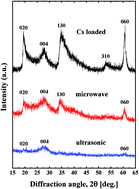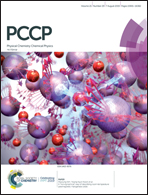Structural reconfigurations of nanosheet arrays in layered minerals caused by wave irradiation: desorption mechanism of Cs from nanosheet edges
Abstract
In layered minerals typically available in soil, there exists a high concentration of nanosheet edge sites formed by overlap among two-dimensional (2D) nanosheets, which act as heavily adhesive Cs chemisorption sites. Here, we propose the application of irradiation with ultrasonic waves in addition to microwaves employing ethylenediaminetetraacetic acid (EDTA) chelate to aid the decontamination of Cs from the nanosheet edges. The energy deposition by irradiation with both micro and ultrasonic waves is found to separate the overlap among the 2D nanosheets, succeeding in the desorption of Cs from the nanosheet edges. The decontamination of Cs became more prominent with ultrasonic irradiation owing to more efficient energy deposition than that with microwaves. The desorption mechanism is highlighted based on the results of systematic studies of the local structural reconfigurations of nanosheet arrays caused by wave irradiation. Surprisingly, not the aqueous solution nor interlayer water but constitution water triggers Cs desorption from the nanosheet edges, thus opening up a future decontamination strategy with a water saving system.

- This article is part of the themed collection: PCCP Editor’s Choice, 2020


 Please wait while we load your content...
Please wait while we load your content...